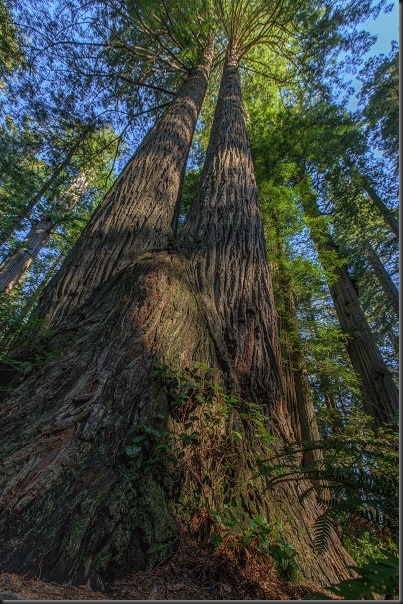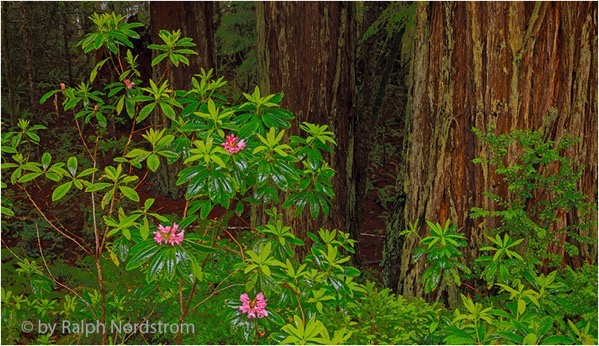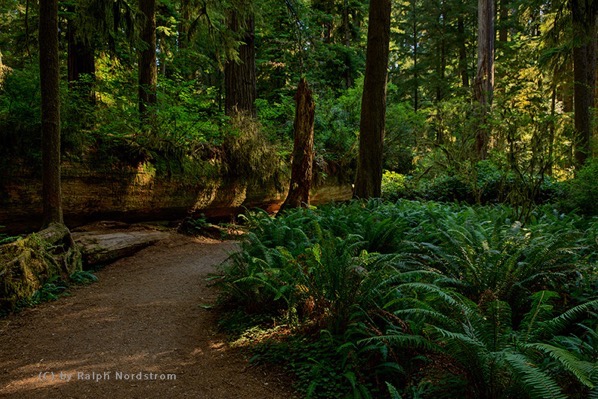
How many times have you seen a photograph of tall trees taken with the camera pointing straight up and the trees converging high in the sky? It’s a pretty common shot. Standing in a grove, turning your eyes upward and wondering at the enormity of these living things, putting camera to eye and pressing the shutter is compelling.
But, to paraphrase Minor White, one of the great pioneers of fine art photography, it’s important to get into the habit of seeing ‘what else is there.’ And one way to find the ‘something else’ is to say to yourself, ‘OK, let’s do something craaaazy!”
I mounted my widest lens on my camera, got my tripod as low as it would go and laid down in the dirt to compose this image. People looked at me like I was craaaazy – which I was. I wanted to capture this incredible tree from ground to crown. There were a few technical details to work out like depth of field and exposure (there always are technical details with digital photography) but the main thing was to capture as much of this tree as I possibly could, so I could share with you the wonder I was feeling.
And a very close second was to let my inner child out and lay in the dirt, gazing into the upper reaches of this towering marvel.
Notice how the tree comes out of the bottom left corner and stretches to the right on a slight diagonal. That was intentional because that little angle changes this image from something static to a much more interesting one that is dynamic, alive. A simple, yet powerful technique.
You can do this yourself. Here are a couple of tips. When you see something you want to photograph, shoot it the way you normally would. But then, get crazy. Let yourself go and play with other ways of viewing your subject. You don’t have to get in the dirt if you don’t want to…, but I highly recommend it.
Also, be aware of diagonal lines in your image. They add motion and energy and make the photograph more interesting.
And finally, fill the frame with your subject. Don’t be afraid to move in closer or, if you have a zoom lens, zoom in tight. Like this tree, make your subject the dominant element in your photograph.
Oh, and don’t forget the experience itself. Bringing home a nice photograph, a keeper, is rewarding but that does not outshine the thrill of being there among these tall giants. It is a time to grow quiet and let Mother Nature speak to you in her soft, still voice.
By the way, this tree is in the Lady Bird Johnson grove at Prairie Creek State Park in Northern California. The tree stands in a small clearing where Lady Bird, Richard Nixon and other dignitaries stood when the grove was dedicated to her. There’s a nice bronze plaque commemorating the moment. Makes it kind of special.
Join me to photograph Redwoods National and State Parks in May from the 21st to the 24th. It’s the perfect time to be there. For more information, click here.
(166)
Like this:
Like Loading...




